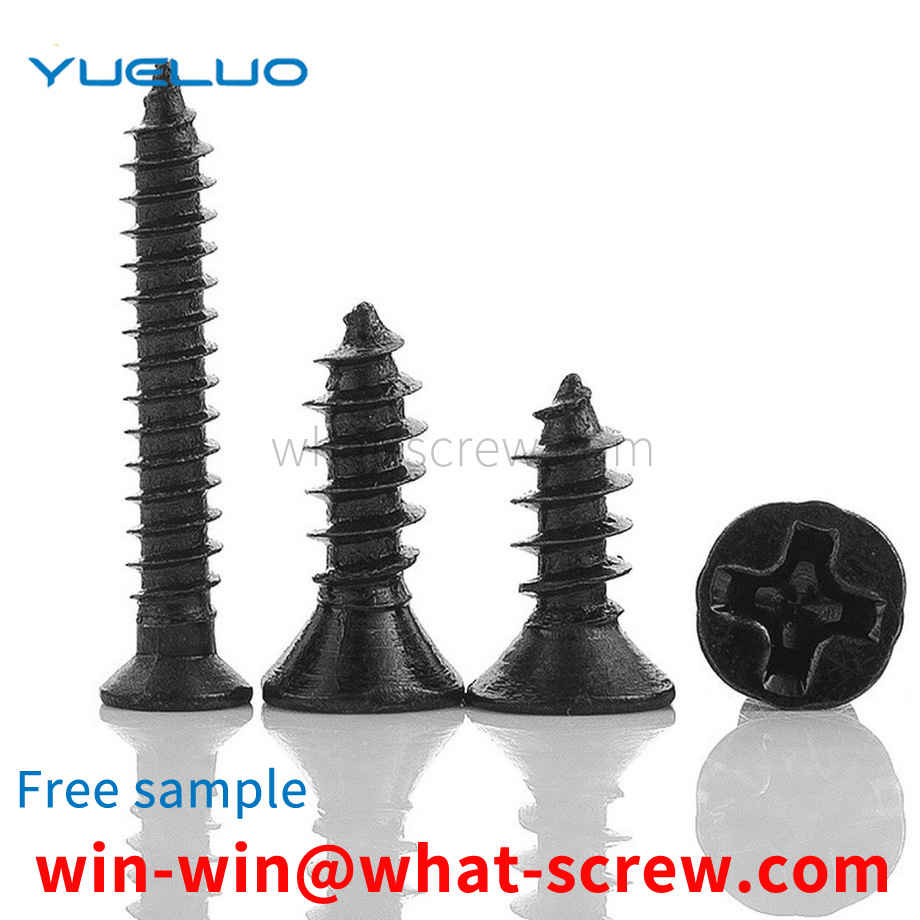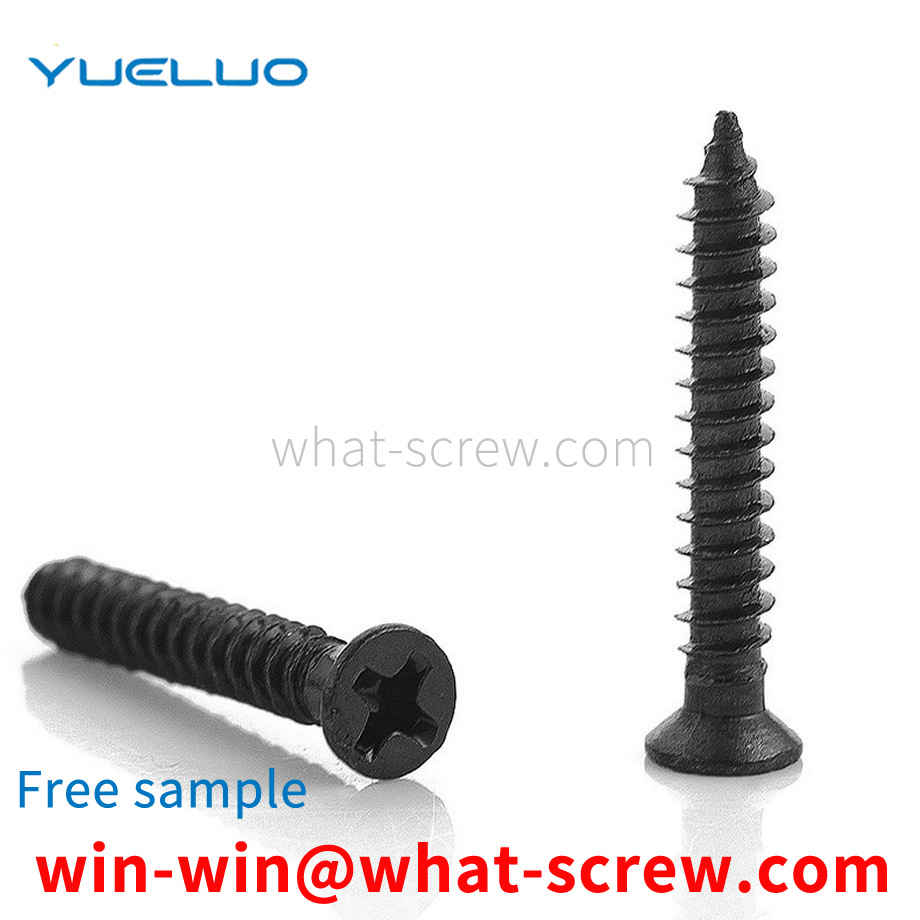The difference between high-strength bolt friction type and pressure-bearing type connection: High-strength bolt high-strength bolt connection is to clamp the plate of the connecting plate through a large tightening pre-pressure in the bolt rod, which is enough to generate a large friction force, thereby improving the connection. The integrity and stiffness of the bolt can be divided into two types: high-strength bolt friction type connection and high-strength bolt pressure type connection according to different design and force requirements when subjected to shear force. The essential difference between the two is that the limit state is different, although It is the same kind of bolt, but it is very different in terms of calculation method, requirements, and scope of application. In the shear design, the friction type connection of high-strength bolts is the limit state when the external shear force reaches the possible maximum friction force provided by the bolt tightening force between the contact surfaces of the plates, that is, the internal and external shear force of the connection is guaranteed not to exceed maximum friction. The plate will not undergo relative slip deformation (the original gap between the screw and the hole wall is always maintained), and the connected plate will be elastically stressed as a whole. In the design of shear resistance, the external shear force is allowed to exceed the maximum friction force in the high-strength bolt-bearing connection. At this time, relative slip deformation occurs between the connected plates until the bolt rod contacts the hole wall, and then the connection depends on the bolt rod. The shearing of the body and the bearing of the hole wall and the friction between the contact surfaces of the plates jointly transmit the force, and finally the shearing of the shaft or the bearing of the hole wall is regarded as the limit state of the connection shearing. In a word, friction type high-strength bolts and pressure-bearing high-strength bolts are actually the same type of bolts, but whether the design considers slippage. Friction type high-strength bolts can never slide, and the bolts do not bear shear force. Once slipped, the design is considered to reach a state of failure, which is technically mature; pressure-bearing high-strength bolts can slide, and the bolts also bear shear force, and the final damage is equivalent to ordinary Bolt failure (bolt shearing or steel plate crushing).
The assembly of hollow rivets and flat head screws riveted on the cover plate is assembled in the product. Compared with the method of connecting with bolts, the loading and unloading speed can improve the efficiency by about 80% to 90%, and is widely used. The assembly needs to riveted hollow rivets and flat head screws on the cover plate, and ensure that the riveted flat head screws can rotate flexibly. When riveting, it is necessary to use special tools to riveted the hollow rivets, flat head screws and cover plates together for riveting. In the existing riveting process, the oval head screw is often damaged due to the action of external force. The positioning process is cumbersome and the work efficiency is low.
Now the screw itself is made of metal, so it is easy to rust, especially screws in harsh weather environments that are exposed to the air for a long time, such as air conditioners, wires, etc. In the existing technology, the shape of the screw has been fixed, and the structure of the screw itself is composed of a shaft with twill in the middle and a polygonal structure with stripes on the outside. OK, but because of the installation of some equipment, it needs to be exposed to the air for a long time. For example, the outdoor unit of the air conditioner must be installed in the outdoor area, and the outdoor can not be sheltered from wind and rain, so after long-term sun and rain, the screw The surface is easy to rust. If the rust is serious to a certain extent, the nut will be embroidered to death. Once the external machine needs to be disassembled one day, the embroidered screw will lose its use value and give workers to the workers. The disassembly and assembly of the screw has caused a lot of trouble, because the embroidered screw cannot be unscrewed directly. The only method used is to cut off the shaft in the middle of the screw with a hacksaw, or discard the entire screw structure. Since the shaft in the screw has been inserted into the middle of the wall, this waste is not good for both aesthetics and safety. To solve the rust problem of the screw, the existing technology is to improve the material of the screw, or to maintain it regularly, but this method itself is time-consuming and labor-intensive, and it is a waste of resources.
With the vigorous development of the construction market, fastener-type steel pipe scaffolding and formwork support have been widely used, and a large number of fasteners are used in the fastener-type steel pipe scaffolding and formwork support system. The commonly used fastener structure generally includes a fastener body 1, a blade 2, and a rivet 3 for connecting the fastener body and the blade. An arc-shaped cavity 4 for penetrating the steel pipe is provided between the fastener body and the blade. Figure 1 Right-angle fasteners shown. However, in the process of building construction, the blades of the fasteners have different degrees of cracks and fractures, which lead to the scrapping of the fasteners, or the fasteners are scrapped due to the poor anchoring of the rivets of the fasteners, resulting in a lot of waste, and the fasteners are damaged. There is a large safety construction hazard. However, repairing damaged fasteners entirely by hand has many disadvantages, such as technical difficulty, time-consuming and labor-intensive, and high operating costs. Therefore, researching and designing an auxiliary device for installing rivets in the process of repairing damaged fasteners to reduce labor intensity of workers, improve repair efficiency, and reduce operating costs is a technical problem to be solved urgently by those skilled in the art.
self-locking screw comprises a screw main body, a metal screw head is arranged on the upper part of the screw main body, a thread is arranged in the middle part of the screw main body, an interference groove is arranged on both sides of the upper part of the screw main body, and the line of the interference groove is arranged. The included angle is 280-356° with the horizontal line. The bottom of the screw body is provided with an elastic chuck, and the elastic chuck includes an optical axis and a conical head. Guangdong Yueluo Hardware Industry Co., Ltd. Guangdong Yueluo Hardware Industry Co., Ltd. adopts the design of elastic collet, and the screw is provided with threaded segments and interference grooves, so that during the screwing process, the interference groove of the optical axis between the two threaded segments is formed along the screw. The axial elastic force achieves the effect of reliable self-locking, which is easy to use and has high tuning efficiency.
We have many years of experience in the production and sales of screws, nuts, flat washers, etc. The main products are: grade 4 natural hexagon nuts, DIN6798J, hexagonal copper nuts, cold heading rivets and other products, we can provide you with suitable fastening products piece solution.



















 Service Hotline
Service Hotline




